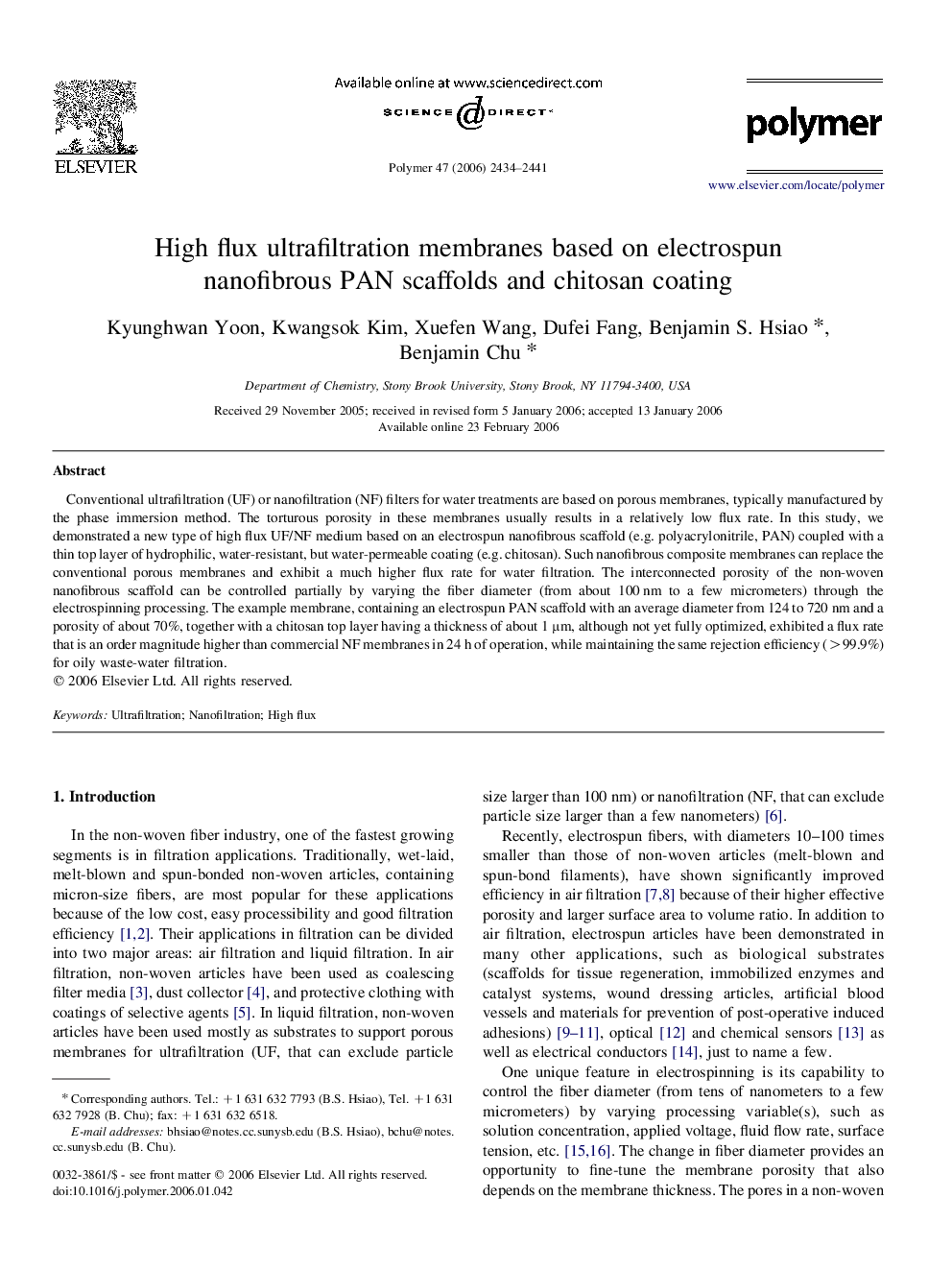| Article ID | Journal | Published Year | Pages | File Type |
|---|---|---|---|---|
| 5190991 | Polymer | 2006 | 8 Pages |
Abstract
Conventional ultrafiltration (UF) or nanofiltration (NF) filters for water treatments are based on porous membranes, typically manufactured by the phase immersion method. The torturous porosity in these membranes usually results in a relatively low flux rate. In this study, we demonstrated a new type of high flux UF/NF medium based on an electrospun nanofibrous scaffold (e.g. polyacrylonitrile, PAN) coupled with a thin top layer of hydrophilic, water-resistant, but water-permeable coating (e.g. chitosan). Such nanofibrous composite membranes can replace the conventional porous membranes and exhibit a much higher flux rate for water filtration. The interconnected porosity of the non-woven nanofibrous scaffold can be controlled partially by varying the fiber diameter (from about 100 nm to a few micrometers) through the electrospinning processing. The example membrane, containing an electrospun PAN scaffold with an average diameter from 124 to 720 nm and a porosity of about 70%, together with a chitosan top layer having a thickness of about 1 μm, although not yet fully optimized, exhibited a flux rate that is an order magnitude higher than commercial NF membranes in 24 h of operation, while maintaining the same rejection efficiency (>99.9%) for oily waste-water filtration.
Related Topics
Physical Sciences and Engineering
Chemistry
Organic Chemistry
Authors
Kyunghwan Yoon, Kwangsok Kim, Xuefen Wang, Dufei Fang, Benjamin S. Hsiao, Benjamin Chu,
